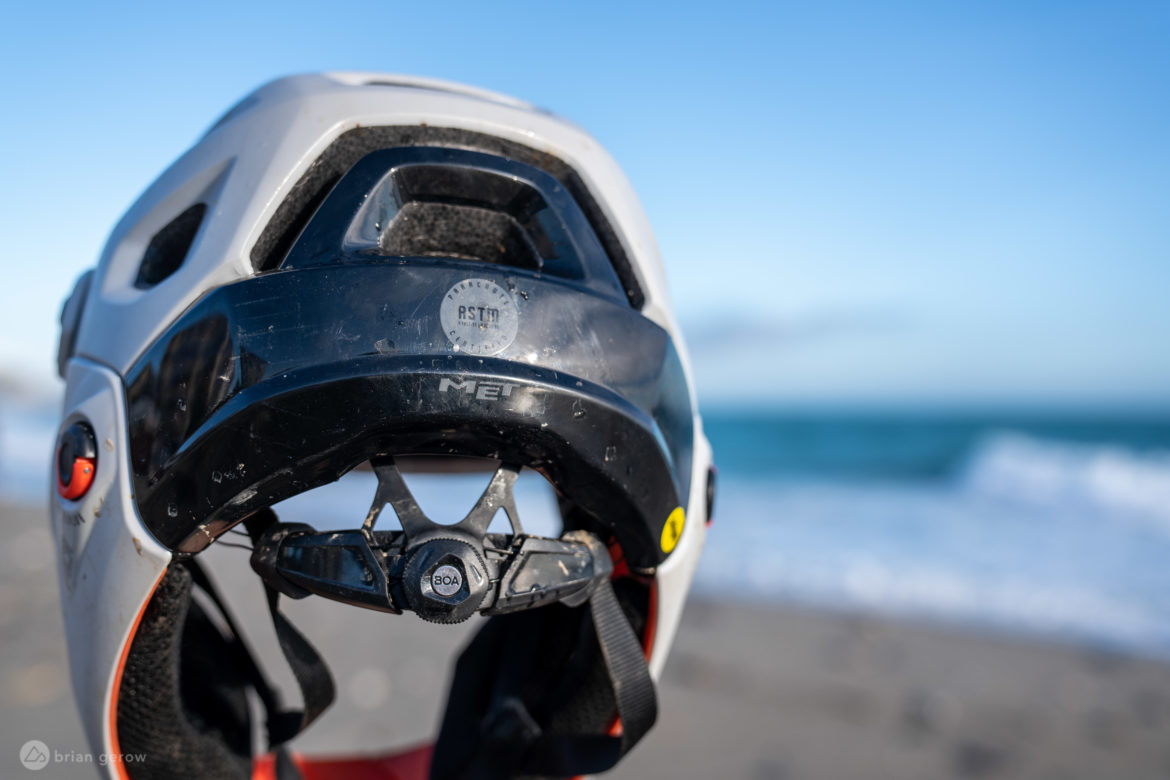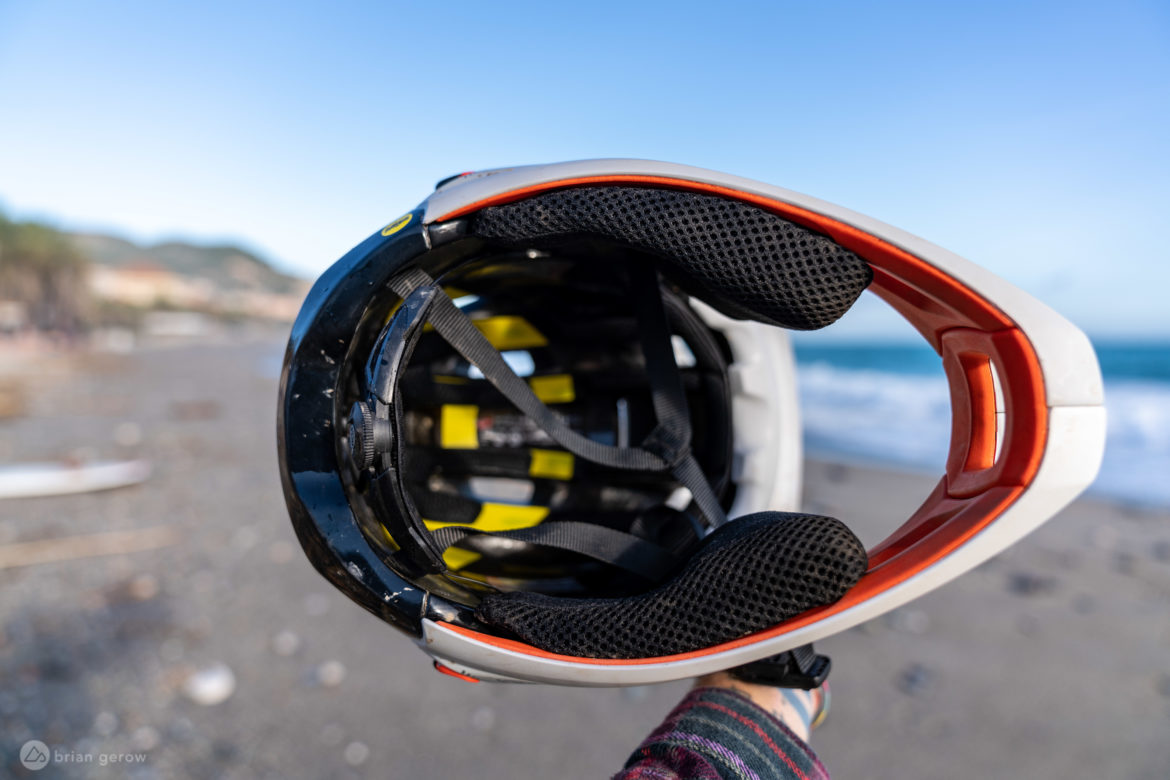
Riding in new areas is one of the most rewarding elements of mountain biking. Have you ever pedaled off down an unknown trail only to wish you brought a full-face helmet after the first fifty feet of track? With a convertible lid like the Parachute MCR from MET, you can have all of the protection you want, with a lighter weight and cooler package for climbing.
The MCR portion of the Parachute’s name stands for Magnetic Chinbar Release, and it works exactly as it sounds. Simply twist the round locking mechanisms rearward on either side (clockwise left, counterclockwise right) and pull forward to release the metal pillars of the chin guard from the main helmet. It’s a wicked simple conversion that takes a few seconds to perform once you get the hang of it. While ascending, hook the chin guard to a bag or belt loop, then lock it in place for added protection on the way down.

On to safety, the MET Parachute MCR has a MIPS C2 liner to help reduce some of the rotational forces upon impact. The visor is made of a flexible material that folds and bends under pressure, leaving your head to turn with the rest of your body as you roll across the ground. The chin guard also has 30mm of flex built-in, further allowing the helmet to absorb impact.
I had the esteemed pleasure of testing the Parachute MCR while landing directly on my head while fully-pinned, and the brain-saver performed as intended. A rocky hole that my eyes had missed ate my front wheel and sent me body head-first into the earth below. According to the rider behind me, I landed directly on my head and rolled forward across my back before flopping to a halt. My head and neck were some of the few parts that didn’t hurt following that get-off, and the Parachute MCR is still working like new, despite having been dragged across the rocks.

The Parachute’s ventilation is among the best. My personal sweat quotient lies somewhere between a light rain and a waterfall, depending on the day, and this helmet has kept the soaking in check. Its 21 vents are well placed to move air throughout, consistently circulating over your skull to remove moisture out, and the chin guard is about as porous as they come. In the half-shell configuration, this helmet breathes every bit as well as MET’s Roam lid that I reviewed earlier this year, though it is a touch heavier with the chin bar hardware inside.

The Parachute has a broad field of vision, with very little of the shell and chin guard showing when you are looking forward. The face opening has ample space for large goggles and the two-position visor flips up so you can store eyewear out of view. Its shell and padding leave open pathways to your ears, and you can hear the trail and your friends well from inside.
Closing the Fidlock latch took me a little longer to learn than the chin guard system, as the buckle’s thin straps can flop around and loop over themselves. The Fidlock is wicked simple to latch once it is properly oriented, but getting it there with gloves on is a tricky task at first.
The helmet’s BOA retention system works swimmingly, as always. The retention dial’s placement can be adjusted across three height positions, to better fit your head shape and desired helmet angle.

- MSRP: €300
- Weight: 840g with chin guard, 455g without
- MIPS C2 Brain Protection System
- Certifications: ASTM F1952-15 / F2032-15
- 21 vents
- BOA fit system
- Two sizes of removable cheek pads
- Available in 6 colors and 3 sizes





The video below clearly demonstrates how to properly mount and release the chin guard.
Check out our mountain bike helmet buyers guide and our picks for the best mountain bike helmets.











2 Comments
Nov 9, 2022
Nov 20, 2019